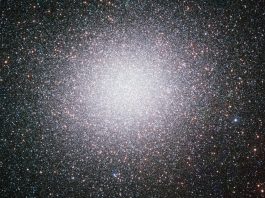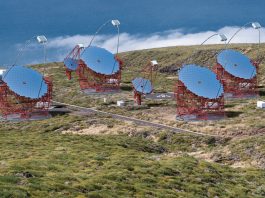A team of researchers, based in Japan, have successfully mapped three nearby interstellar gas clouds, improving our understanding of how stars form.
Researchers have successfully mapped three nearby interstellar gas clouds containing regions of ongoing high-mass star formation, helping to improve our understanding of star formation.
Stars are born from interstellar gas clouds which are difficult to observe in visible light. However, they emit strong radio wavelength, which can be observed by the Nobeyama 45-m Radio Telescope in Japan.
A research team led by Fumitaka Nakamura, Assistant Professor at the National Astronomical Observatory of Japan (NAOJ), used the telescope to create detailed radio maps of interstellar gas clouds.
The research team includes members from NAOJ, the University of Tokyo, Tokyo Gakugei University, Ibaraki University, Otsuma Women’s University, Niigata University, Nagoya City University, and other universities, will use the observational data to investigate the star formation process.
Rethinking the limits of astronomy
The team of astronomers targeted three interstellar clouds, the Orion A, Aquila Rift, and M17 regions. For the Orion A region, the group combined their data with that of the CARMA interferometer, USA, to create the most detailed map ever of the region. The map has a spatial resolution of about 3200 astronomical units, revealing details as small as 60 times the size of the Solar System.
The world’s most powerful radio telescope, the Atacama Large Millimeter/submillimeter Array (ALMA), could not obtain a similar large-scale map of Orion A because of ALMA’s limited field-of-view and observation time constraints. ALMA can investigate more distant interstellar clouds, therefore, this large-scale, most-detailed radio map of the Orion A gas cloud obtained by the Star Formation Project is complementary with another observational research.
The research paper highlights: “We carried out mapping observations toward three nearby molecular clouds, Orion A, Aquila Rift, and M 17, using a new 100 GHz receiver, FOREST, on the Nobeyama 45 m telescope. We describe the details of the data obtained such as intensity calibration, data sensitivity, angular resolution, and velocity resolution. Each target contains at least one high-mass star-forming region.”









